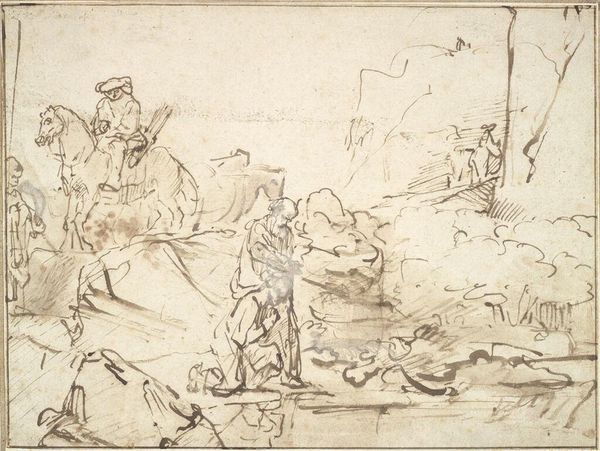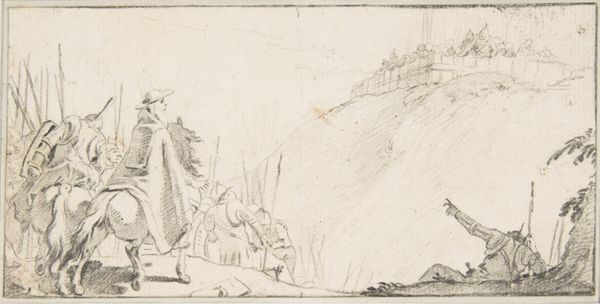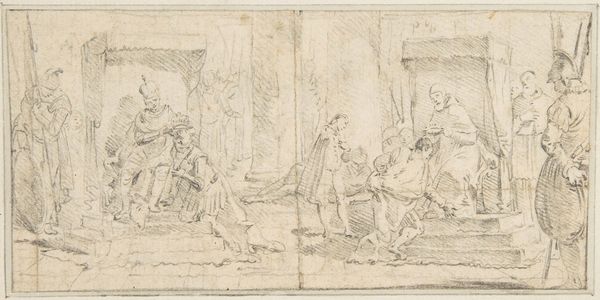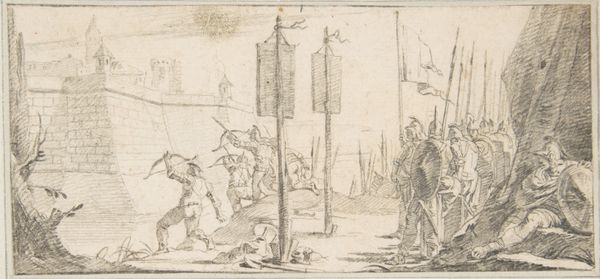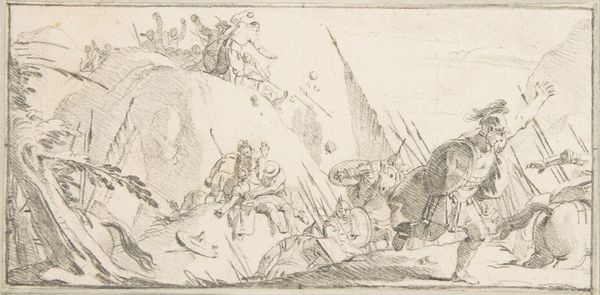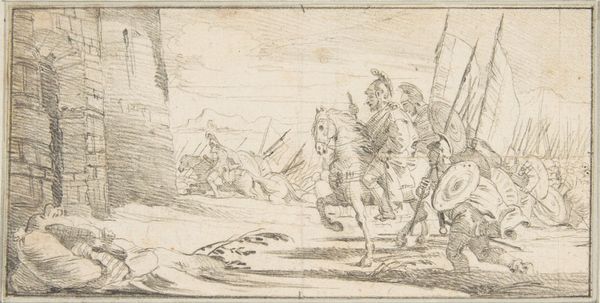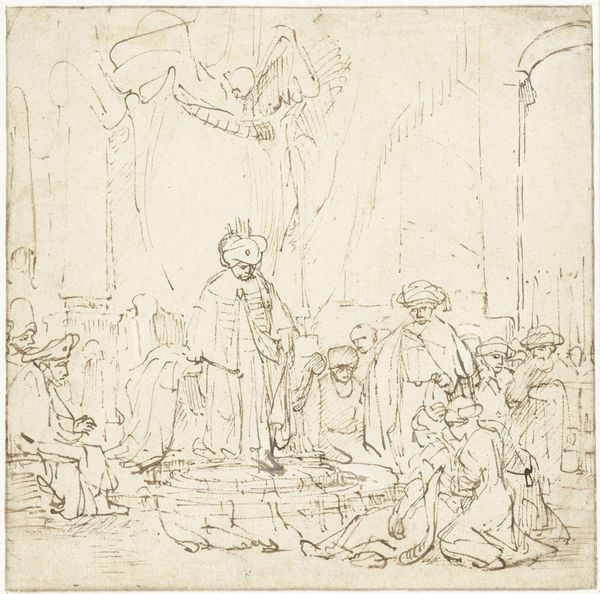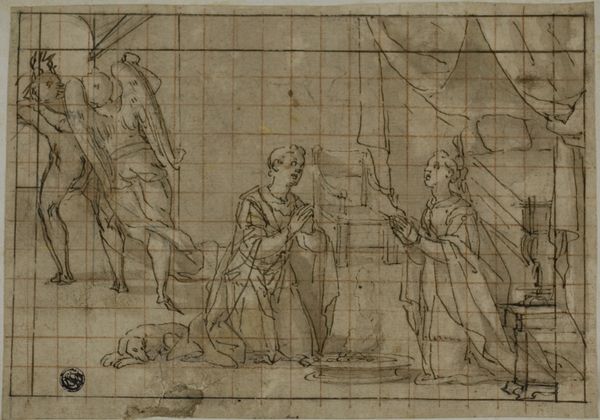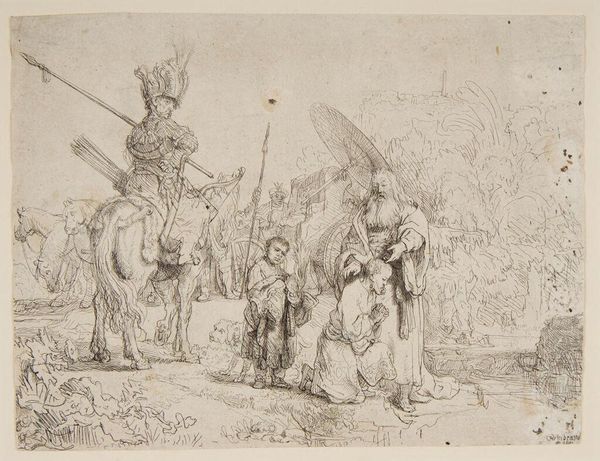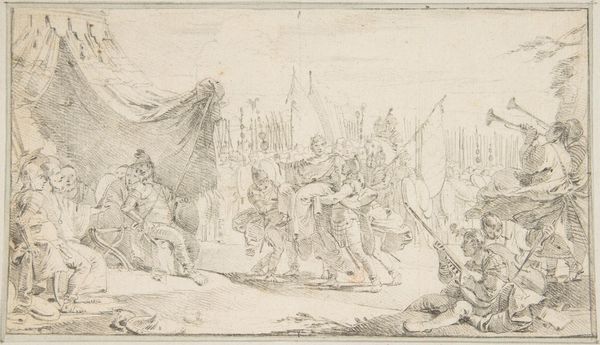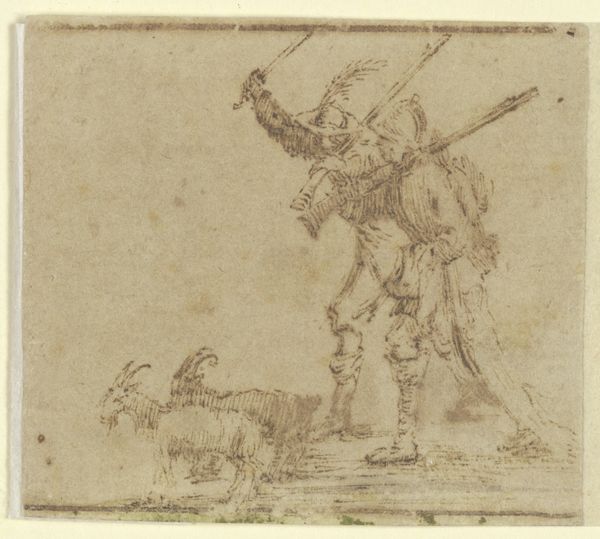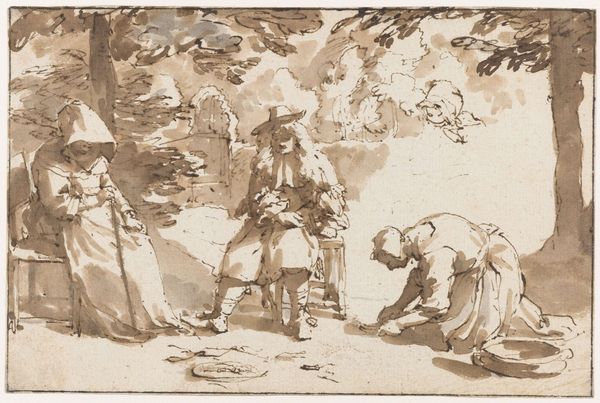
Soldier in front of ‘General’ Holding up a Decapitated Head on a Staff 1696 - 1770
0:00
0:00
drawing, etching
#
drawing
#
narrative-art
#
baroque
#
etching
#
etching
#
figuration
#
history-painting
Copyright: Public Domain: Artvee
Editor: Here we have Giovanni Battista Tiepolo’s etching, "Soldier in front of ‘General’ Holding up a Decapitated Head on a Staff," created sometime between 1696 and 1770. The image itself is incredibly stark; what strikes me most is how the etching technique almost renders the violence in a casual, matter-of-fact way. What's your take? Curator: As a materialist, I look at the implications of the etching process itself. Consider the copper plate: its inherent value, the labor required to create the image through acid and tools, and its potential for mass production. It wasn't just about aesthetics. Tiepolo’s choice to use etching, a printmaking method allowing for multiples, indicates a desire for wider dissemination. Who was his audience and what socio-political message about warfare or leadership might he have been trying to convey through inexpensive, reproducible images? Editor: So, the choice of etching speaks to its accessibility? Did this make art more democratic? Curator: Potentially, but it also speaks to a shift in the art market and the artist’s role. We need to think about the networks of production and distribution. Was Tiepolo reliant on patrons, or could he control the means of getting his work to the public and influence popular opinion in this manner? Who profited from its sale? The economics surrounding the creation of this etching are more telling. The artwork might offer insights into early forms of propaganda and social critique through image distribution and reproduction. Editor: That’s a totally different way of seeing this piece. Thinking about the labor and social impact of creating it opens up so much. Curator: Exactly. By shifting our focus from purely aesthetic qualities to production methods and consumption patterns, we can unlock so many perspectives on a piece such as this. The power wasn’t solely in Tiepolo’s artistic skill but rather it was tied to its role as a commodity that reflected and shaped socio-political realities. Editor: I will never look at an etching the same way! Thank you.
Comments
No comments
Be the first to comment and join the conversation on the ultimate creative platform.

